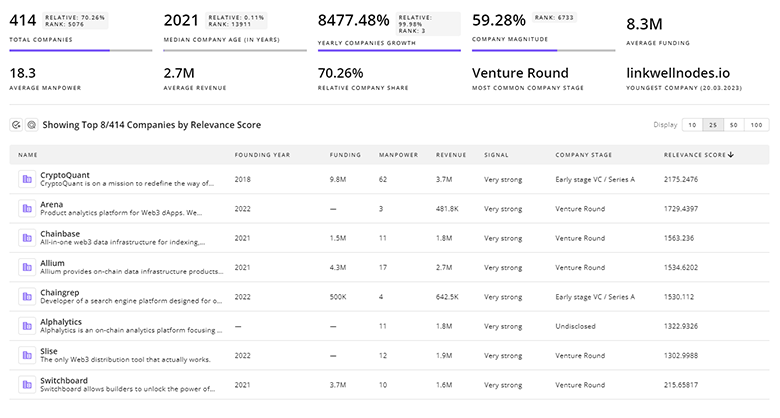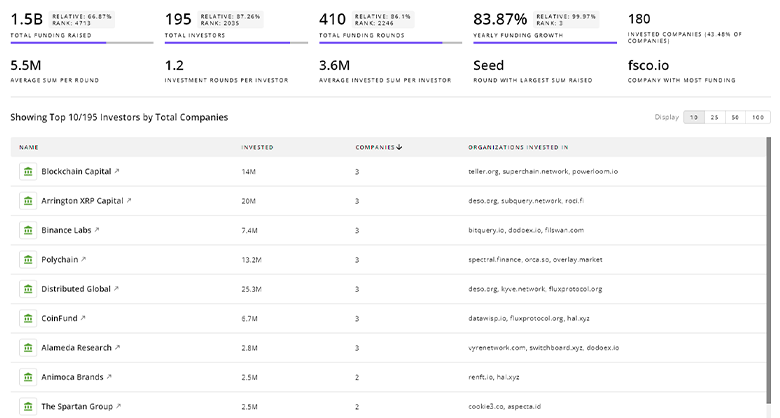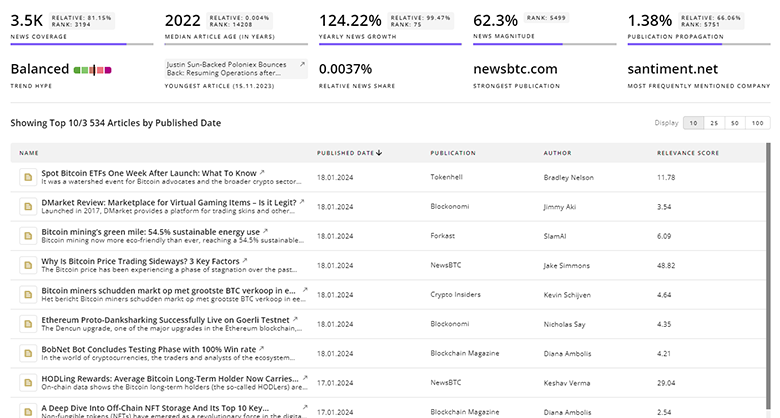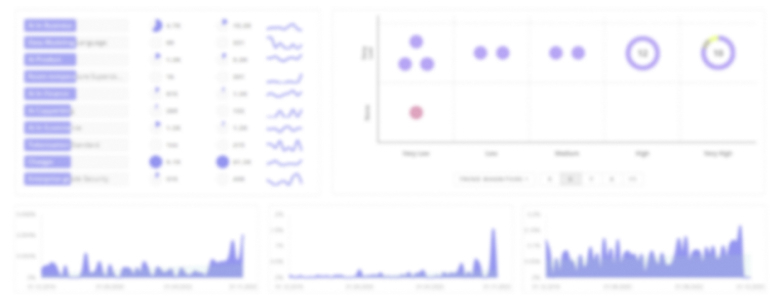
Spatial Computing Report
: Analysis on the Market, Trends, and TechnologiesThe spatial computing market continues to evolve rapidly with significant financial backing and industry adoption. Internal trend analysis indicates that companies in this space have collectively raised approximately $9.92B in funding, while multiple independent market reports forecast global market values growing from around USD 142.6 billion in 2023 to nearly USD 620.2 billion by 2032 (Grand View ResearchMarket Research Future). This report offers an integrated perspective on the key activities, emergent trends, technological approaches, and competitive dynamics shaping the spatial computing industry, providing a forward‑looking view for professionals.
145 days ago, we last updated this report. Notice something that’s not right? Let’s fix it together.
Topic Dominance Index of Spatial Computing
To gauge the influence of Spatial Computing within the technological landscape, the Dominance Index analyzes trends from published articles, newly established companies, and global search activity
Key Activities and Applications
Immersive Training and Simulation:
Organizations are increasingly using spatial computing platforms for realistic, interactive training simulations in healthcare, manufacturing, and defense to improve skill development and reduce errors (Market US).Enhanced Retail Experiences:
Retailers are integrating augmented reality to support virtual try‑ons, product visualization, and personalized shopping experiences, thereby bridging the gap between digital and in‑store channels.Remote Collaboration and Virtual Meetings:
Companies are deploying spatial collaboration tools that allow remote teams to interact in 3D environments, which increases productivity and reduces the need for physical travel.3D Design and Prototyping:
Advanced visualization and modeling tools based on spatial computing are widely used for digital prototyping and design reviews in architecture and engineering.
Emergent Trends and Core Insights
Integration of AR, VR, and AI:
The convergence of augmented reality, virtual reality, and artificial intelligence is enabling spatial computing systems to offer real‑time object recognition and interactive 3D experiences across multiple sectors.Use of Digital Twins:
Industries such as manufacturing and urban planning are increasingly adopting digital twin platforms to simulate physical environments and optimize processes.Expansion in Enterprise Sectors:
Enterprises, particularly in healthcare and automotive, are incorporating spatial computing to refine operational workflows, improve safety, and enhance decision‑making through real‑time data visualization.Rising Investments and Partnerships:
Strategic investments and collaborations between technology giants and startups are accelerating the development of advanced spatial computing solutions that cater to customized industry needs.
Technologies and Methodologies
Augmented, Virtual, and Mixed Reality:
These key technologies enable the overlay of digital content, full immersion in virtual environments, and a blend of both, respectively, forming the core of spatial computing applications.Internet of Things (IoT) and Sensor Fusion:
IoT devices and advanced sensors collect real‑time data that drive the interactivity in spatial computing, ensuring accurate and timely responses.Cloud‑Based Infrastructure:
Cloud computing facilitates scalable storage and real‑time processing of spatial data, making immersive applications more accessible to businesses.Digital Twin Platforms:
These platforms create virtual replicas of physical environments for simulation, monitoring, and predictive maintenance, enhancing operational efficiency.AI and Machine Learning Algorithms:
Advanced algorithms improve spatial computing systems by providing insights from complex datasets and enhancing the accuracy of real‑time object recognition and predictive analytics.
Spatial Computing Funding
A total of 216 Spatial Computing companies have received funding.
Overall, Spatial Computing companies have raised $9.9B.
Companies within the Spatial Computing domain have secured capital from 937 funding rounds.
The chart shows the funding trendline of Spatial Computing companies over the last 5 years
Spatial Computing Companies
Spatiality Limited:
Spatiality Limited helps businesses harness geospatial data through cloud‑based solutions and location analytics. The company focuses on providing smarter business insights and streamlining operations with data‑driven tools, which is crucial for sectors such as urban planning and retail. With a small but focused team, they offer personalised support for digital transformation initiatives.SE3 Labs:
SE3 Labs specialises in semantic 3D digital twins and computer‑vision solutions that simplify conversion of spatial data into actionable insights. Their intuitive platform supports industries like robotics and smart cities, enabling efficient spatial‑data processing without complex user training.GridRaster Inc.:
GridRaster Inc. delivers cloud‑based XR platforms that integrate digital‑twin solutions with advanced 3D spatial mapping and low‑latency remote rendering. Targeting sectors such as aerospace and automotive, the company focuses on cost‑efficient and precise digital modelling, which supports industrial automation and training.CN2 SPATIAL:
CN2 SPATIAL is a leader in enterprise spatial computing focused on creating scalable spatial applications for sales, training, and real‑property visualisation. Its patented platform allows clients to deploy customisable spatial solutions that integrate with existing enterprise systems, making it a strategic partner for businesses seeking rapid digital upgrades.SPAC.Design:
SPAC.Design offers design‑thinking workshops and coaching services to help companies integrate spatial computing into their product and service portfolios. By providing tailored guidance and creative problem‑solving sessions, SPAC.Design supports businesses in adopting immersive technologies with minimal in‑house expertise.
Get detailed analytics and profiles on 954 companies driving change in Spatial Computing, enabling you to make informed strategic decisions.

954 Spatial Computing Companies
Discover Spatial Computing Companies, their Funding, Manpower, Revenues, Stages, and much more
Spatial Computing Investors
TrendFeedr’s Investors tool provides an extensive overview of 1.1K Spatial Computing investors and their activities. By analyzing funding rounds and market trends, this tool equips you with the knowledge to make strategic investment decisions in the Spatial Computing sector.

1.1K Spatial Computing Investors
Discover Spatial Computing Investors, Funding Rounds, Invested Amounts, and Funding Growth
Spatial Computing News
Explore the evolution and current state of Spatial Computing with TrendFeedr’s News feature. Access 3.8K Spatial Computing articles that provide comprehensive insights into market trends and technological advancements.

3.8K Spatial Computing News Articles
Discover Latest Spatial Computing Articles, News Magnitude, Publication Propagation, Yearly Growth, and Strongest Publications
Executive Summary
Spatial computing continues its upward trajectory as an essential technology that reshapes interactions between digital and physical environments. Key activities such as immersive training, enhanced retail applications, and real‑time collaboration underscore its practical utility across industries. As emergent trends drive the integration of AR, VR, and AI, and as methodologies evolve with IoT and cloud computing, businesses are embracing this technology to improve efficiency, safety, and decision‑making. While challenges such as high implementation costs and data privacy remain, the competitive landscape and strategic partnerships are paving the way for further market expansion. Organisations should closely monitor these developments to better position themselves for future success.
We're looking to collaborate with knowledgeable insiders to enhance our analysis of trends and tech. Join us!











